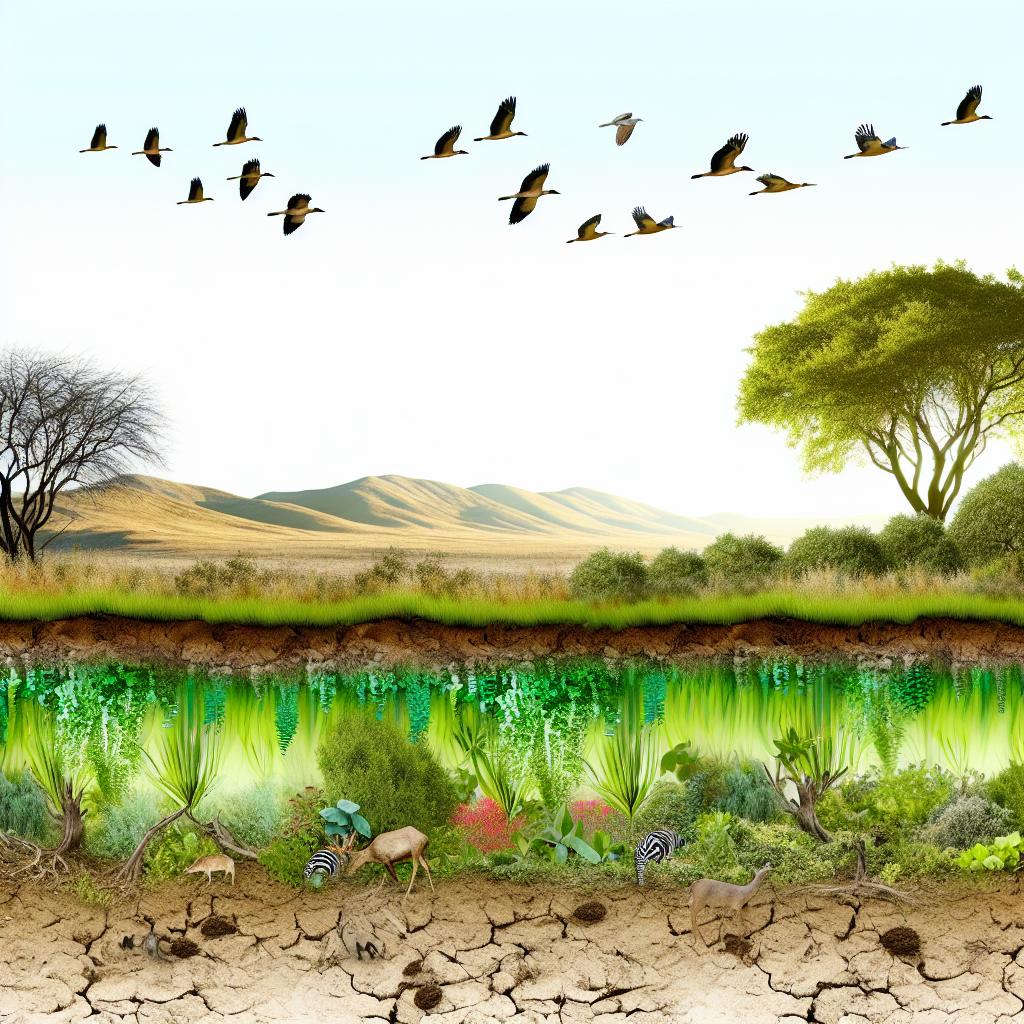
The Art of Rewildering: Bringing Nature Back
The Concept of Rewildering
Rewildering, sometimes referred to as rewilding, represents a transformative conservation strategy focused on the rejuvenation and preservation of natural processes, wilderness zones, and ecosystems. This environmental approach emphasizes nature’s inherent ability to restore balance to the environment when given the opportunity to function without significant human interference. By intentionally reducing human control and influence over natural landscapes, rewildering enables ecosystems to evolve independently, bolstering biodiversity and enhancing ecosystem health.
Key Principles of Rewildering
To fully grasp the concept of rewildering, one must delve into the underlying principles that drive this conservation strategy. Primarily, rewildering emphasizes the removal of artificial barriers that disrupt natural processes. Structures such as dams and fences can impede ecological functions, and their elimination is often a primary goal.
Secondly, the reintroduction of keystone species is crucial. Keystone species, like wolves or beavers, hold pivotal roles in maintaining ecological equilibrium. Their presence or absence can dramatically shape ecosystem dynamics, influencing the distribution and population of numerous other species.
In addition, supporting the natural disturbance regimes essential to ecosystem vitality is another cornerstone of rewildering. Disturbances such as fires and floods, although seemingly destructive, play vital roles in nutrient cycling and in promoting the growth of a rich variety of vegetation types. Such disturbances create a dynamic environment where various species can thrive, adding to the system’s resilience.
Finally, establishing core wilderness areas that are connected by wildlife corridors is central to rewildering efforts. These corridors facilitate species migration and genetic exchange, offering routes for animals to travel safely across landscapes, mitigating the effects of habitat fragmentation.
Case Studies in Rewildering
To illustrate the potential of rewildering, several projects have demonstrated remarkable benefits following implementation. One prominent case is the reintroduction of wolves to Yellowstone National Park in the United States. Following their reintroduction in the mid-1990s, wolves have served as catalysts for numerous ecological enhancements. Their predation on elk has initiated a cascade of changes, allowing aspen and willow trees to recover. This regrowth supports a myriad of other species, including birds and beavers, indicating the complex interdependencies inherent in ecosystems.
In Europe, the Oostvaardersplassen nature reserve located in the Netherlands illustrates a model of non-interventionist management. Within this reserve, large herbivores such as deer and wild cattle roam freely, creating a dynamic ecological system that simulates historical predator-prey interactions. This setup provides valuable insights into how ecosystems can self-regulate when left relatively undisturbed.
Challenges and Considerations
Despite the promising restorative benefits of rewildering, the strategy does not come without its challenges. One significant challenge involves opposition from stakeholders, particularly those in agricultural and land-use sectors. Concerns often revolve around potential conflicts with reintroduced predators or anticipated modifications to the landscape, which could affect agricultural productivity or land value.
Moreover, identifying what constitutes the “natural” state of an ecosystem is complex, compounded further by historical human impacts and contemporary climate change effects. Establishing a baseline against which progress can be measured is therefore not straightforward and requires careful consideration.
Rewildering necessitates thoughtful planning and collaboration with local communities. Socioeconomic impacts must be considered and addressed to garner support and build consensus. Engaging and educating the public through transparent processes are key steps in overcoming resistance and fostering community involvement and acceptance.
Moving Forward with Rewildering
As rewildering continues to garner attention among conservationists, it is evident that this approach presents a viable pathway to restoring ecological integrity in various landscapes. By prioritizing the revitalization of natural processes and promoting resilience within ecosystems, there lies immense potential for attaining significant environmental benefits.
Moving forward, the future of rewildering depends on continuous research, adaptive management practices, and collaborative efforts across multiple sectors. It remains essential to monitor ecological outcomes and adapt strategies as necessary to align with changing environmental conditions and societal needs. Moreover, fostering partnerships with organizations, researchers, and communities will be vital for realizing the long-term success of rewildering initiatives.
Organizations such as Rewilding Britain and Rewilding Europe are actively engaged in promoting and implementing rewildering projects across diverse habitats. By sharing knowledge, resources, and expertise, these entities contribute to a growing movement aimed at enhancing biodiversity and bolstering ecosystem resilience.
Ultimately, the collective efforts to embrace the principles of rewildering can lead to the restoration of functional and thriving natural systems—benefiting not only the flora and fauna inhabiting these landscapes but also the people who rely on healthy ecosystems for their well-being and livelihoods. Through conscientious stewardship and a commitment to allowing nature to heal itself, rewildering holds the promise of revitalizing our planet’s natural heritage for generations to come.